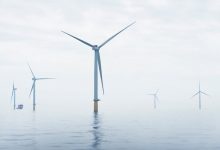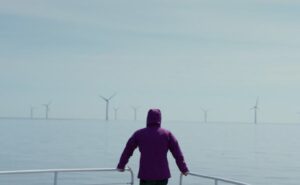A landmark bill that will enable offshore wind farms to be built in Australian waters for the first time – and clear the path for massive renewable export projects such as the Sun Cable solar farm in the Northern Territory – has been endorsed by a cross-party Senate sub-committee.
The bill was introduced by energy minister Angus Taylor last month, after some considerable delays. And although it falls short of what many in the industry were hoping for in terms of definitions and clarity, it is seen as a key stepping stone to start building the first offshore wind farms in Australia.
There are estimated to be nearly 20GW of offshore wind project proposals – all at early stage of development – and the Australian Energy Market Operator has identified several offshore wind zones that could accommodate up to 40GW of offshore wind.
Most projects are in their very early stage, with the most advanced being the 2.2GW Star of the South project, although Alinta recently revealed it was looking at an offshore wind project of more than 1GW in scale.
Offshore wind is now being looked at because developments overseas have pushed the price down significantly, they may pose fewer environmental concerns, and they are seen by some as a ready replacement for the big coal generators due to leave the grid in the next decade.
However, there has been concern that any further delays in legislation will result in big international investors turning their attention to other parts of Asia.
The bill also clears the path for renewable export projects such as the massive Sub Cable project in the NT, which is looking at up to 20GW of solar, and more than 40GWh of battery storage, with most of it to be exported to Singapore via sub-sea cable.
A cross party committee noted the significant benefits of the new bill to Australia’s economy and “clean energy future”, and noted the widespread support of governments, developers, investors, unions, researchers, academics, environmentalists, communities and individuals.
However, it noted that the “operating” details of the bill had yet to be developed, and may not be ready until late 2022. eager to see the bills expeditiously enacted.
Labor lamented the government delays on the legislation.
“It had promised that ‘the legislative settings and framework aim to be in place and operational by mid-2021’.Instead, one of three necessary bills has not even been introduced, and the development of detailed regulations will take well into 2022,” they noted.
They also expressed concern about some of the health and safety aspects of the bill, and the problems that could emerge from workers having to deal with two different jurisdictions.
The Australian Greens said the legislation is crucial to the “urgent tasks of driving coal and gas out of Australia’s domestic energy system and replacing coal and gas exports for our energy customers around the world.”
“While there are some improvements that should be made to the Bill, the legislation should promptly be passed into law,” they said.
“This will allow projects stalled by the absence of any regulatory environment to proceed, such as the 2.2 GW Star of the South which will replace Australia’s oldest and dirtiest coal plant, Yallourn, in Victoria’s LaTrobe Valley and Oceanex’s 10 GW of projects situated offshore of NSW’s coal regions of the Hunter Valley and Illawarra.”
“By harnessing the abundance of our offshore wind resources, we can drive the cost of energy down—potentially close to zero—giving Australia a competitive edge to bring manufacturing back to our shores and ensure heavy industry can continue in a carbon constrained global economy.”
Andy Evans, the CEO of Oceanex, which has more than 10GW of offshore wind proposals along the eastern seaboard, welcomed the recommendation.
“The Report sends a clear signal that industry and the regions strongly support an offshore electricity industry and that Australia should move quickly,” he said. “The recommendation from the Committee that the bills be passed is a further endorsement of the great opportunity that awaits Australia.”








